Macquarie Marshes Safari
Macquarie, Barwon and Bokhara Rivers
16-26 April 2022
By BRON POWELL and KEVIN SONGBERG
We were planning a trip to the upper Macleay River, but a last-minute decision about not risking flood-damaged access roads saw us head to the Lower Wambuul-Macquarie River instead, where flows were looking good and there had been just enough days passed since the last rain for the access roads to be dry enough.
Some hasty emails between us and organising ensued. With Bron hastily texting and/or ringing landholders, and an early morning start for those leaving Sydney—seven and a half hour drive plus breaks—we headed north-west for a river section that offered a multi-day escape into a reasonably remote area, even though we weren’t quite sure how good it would be or what it would be like—how congested with trees and logs.
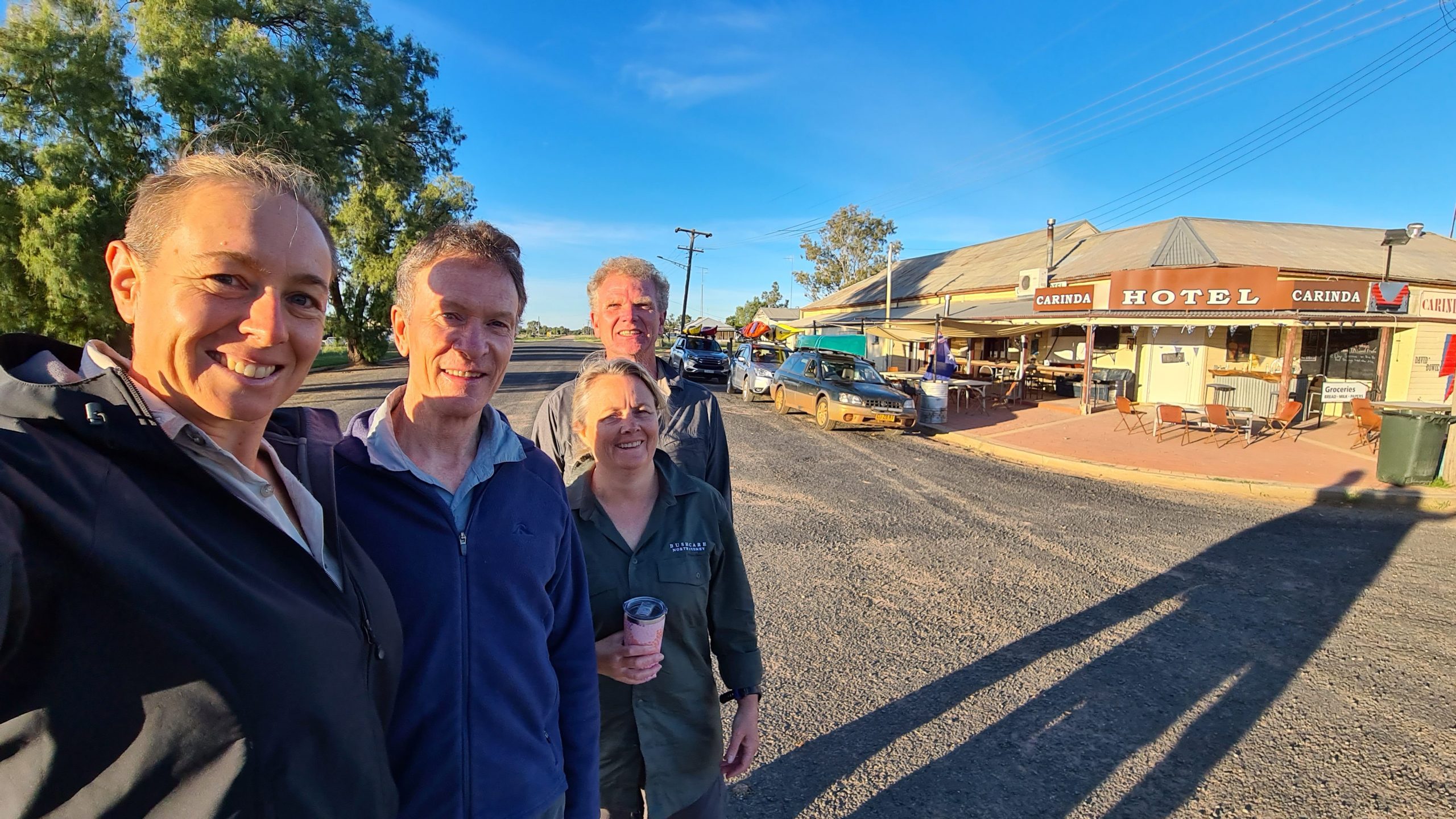
Day zero was drive to Carinda Hotel, our accommodation for the night—yes, it says something about a town when there is accommodation available last-minute at Easter. Jim and Karen, who had car-pooled together, arrived in time to see the sun set on the main street in Carinda and the full moon rise at the other end—the roads are dead-straight with no trees, so this works. They had quickly become well-acquainted with the locals and David Bowie in the pub—it’s where the “Let’s Dance” music video was filmed—by the time Bron and Kevin arrived. When getting a photo of herself next to the life-size David Bowie image on the pub wall, Karen even commented she would have liked to kiss him if he had still been here—we were not sure how far to explore that, so all consumed some extra beer to change subject.
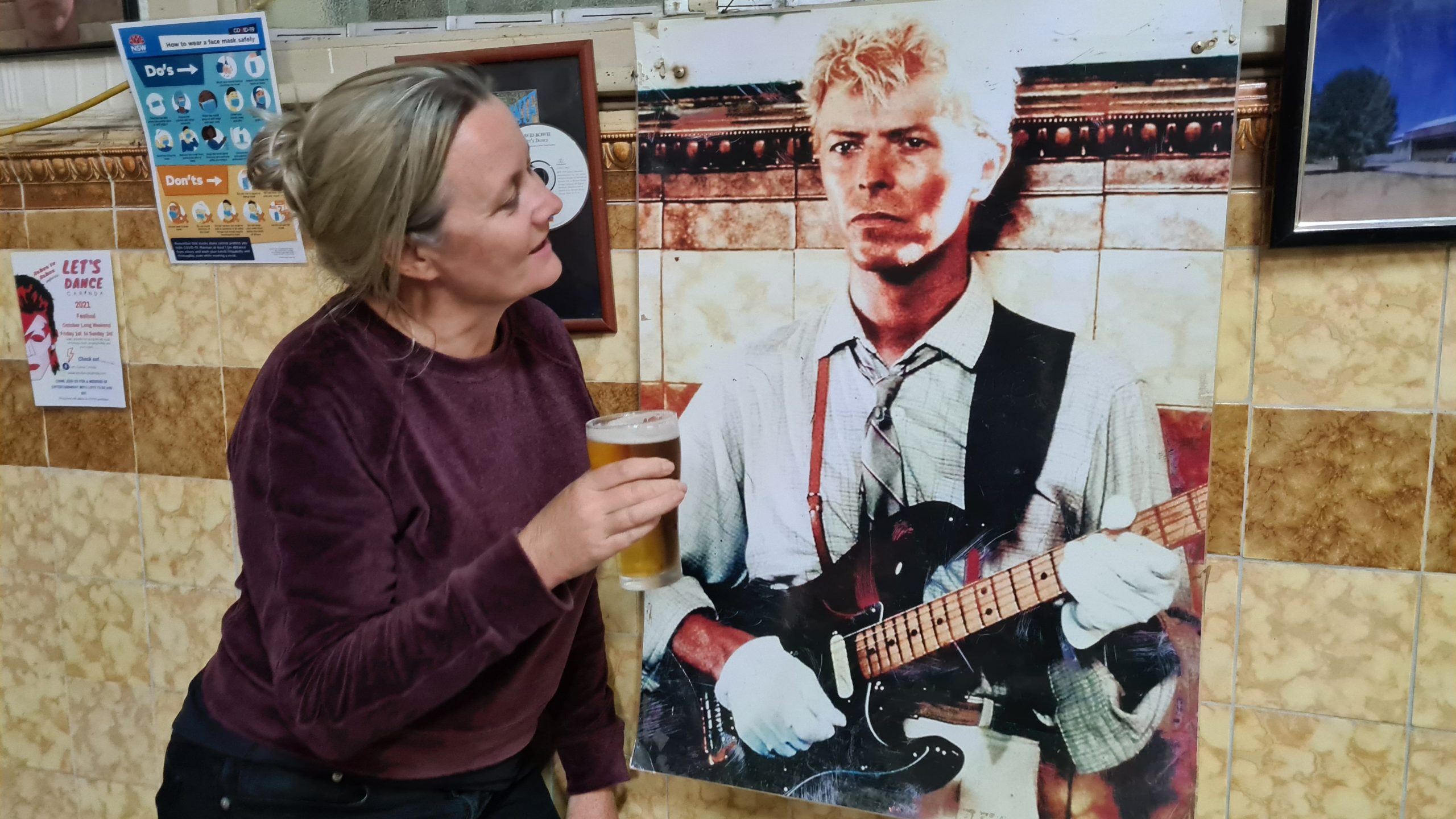
Carinda to the Barwon River
The river was at a good level, with 2200 ML/day at Miltara gauge, and 1600 ML/day at Carinda gauge. Our first day was a day-trip to Miltara. We put in at a wheat paddock and explored up into the thick lignum, reeds and river redgums of the lower end of the Macquarie Marshes. We heard the iconic Marshes sound of roos splash-hopping through the water. No leeches this time either—we were well prepared with lighters at the ready in our lifejacket pockets, after an infestation of them on our last trip to the Marshes.
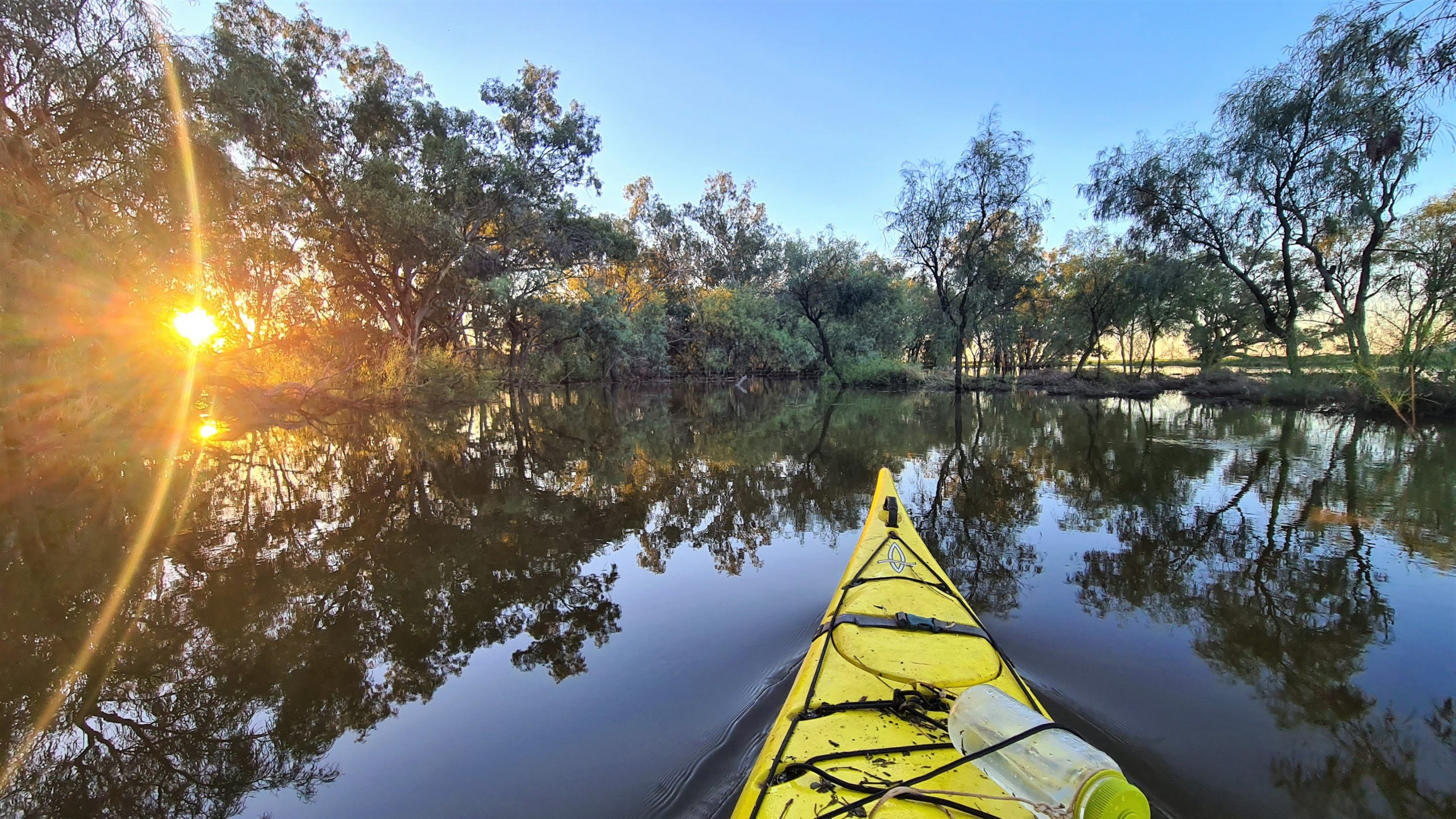
We then headed downstream on our three day trip to the Barwon River. It surpassed all our expectations of how beautiful it would be—Bron had walked it before when it was bone dry, and told everyone it wasn’t that exciting; now paddling it, she figured a bit of water does make a difference! We paddled among river red gums and coolibah trees, lots of scar trees, lignum thickets, lagoons in side channels and the water occasionally spread out into large wetlands. A lot of the time it was like, “Where’s the river? Just pick your own path, wherever there’s flow…”—the many options for which channel to take made it super interesting to explore.
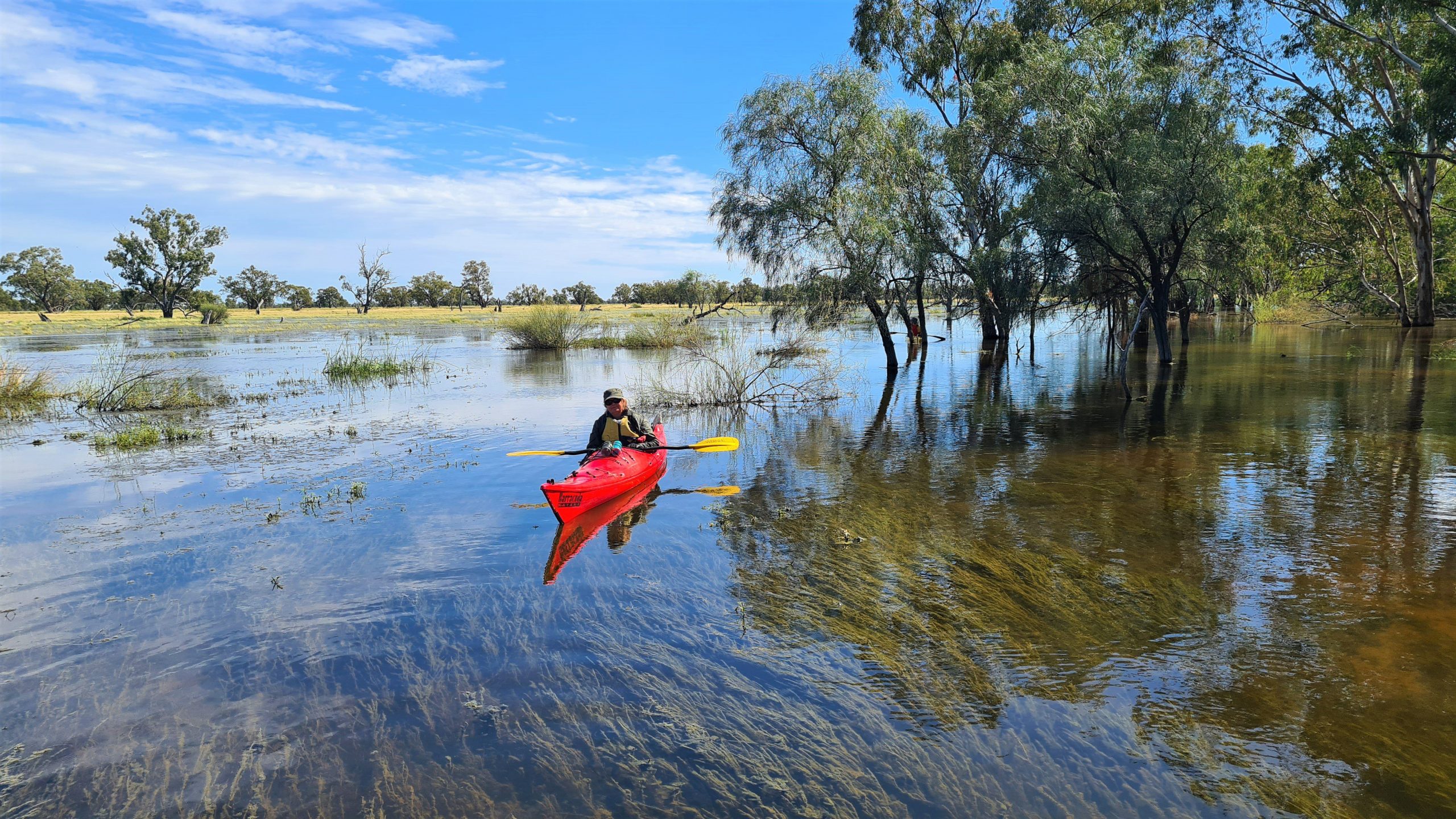
Sometimes it was also a matter of “Er, everyone look out for dry land so we can have lunch/afternoon tea/camp” and we kept paddling until we found some—though with the lack of dry land in places, there was also the occasional getting out onto a log in the water to use the bathroom. There were flocks of budgies, corellas, parrots and water birds flying around, green tree frogs, an abundance of colourful dragonflies, emus with teenage chicks, plus the dreaded mozzies weren’t too bad, though having a fire each night definitely helped with this.
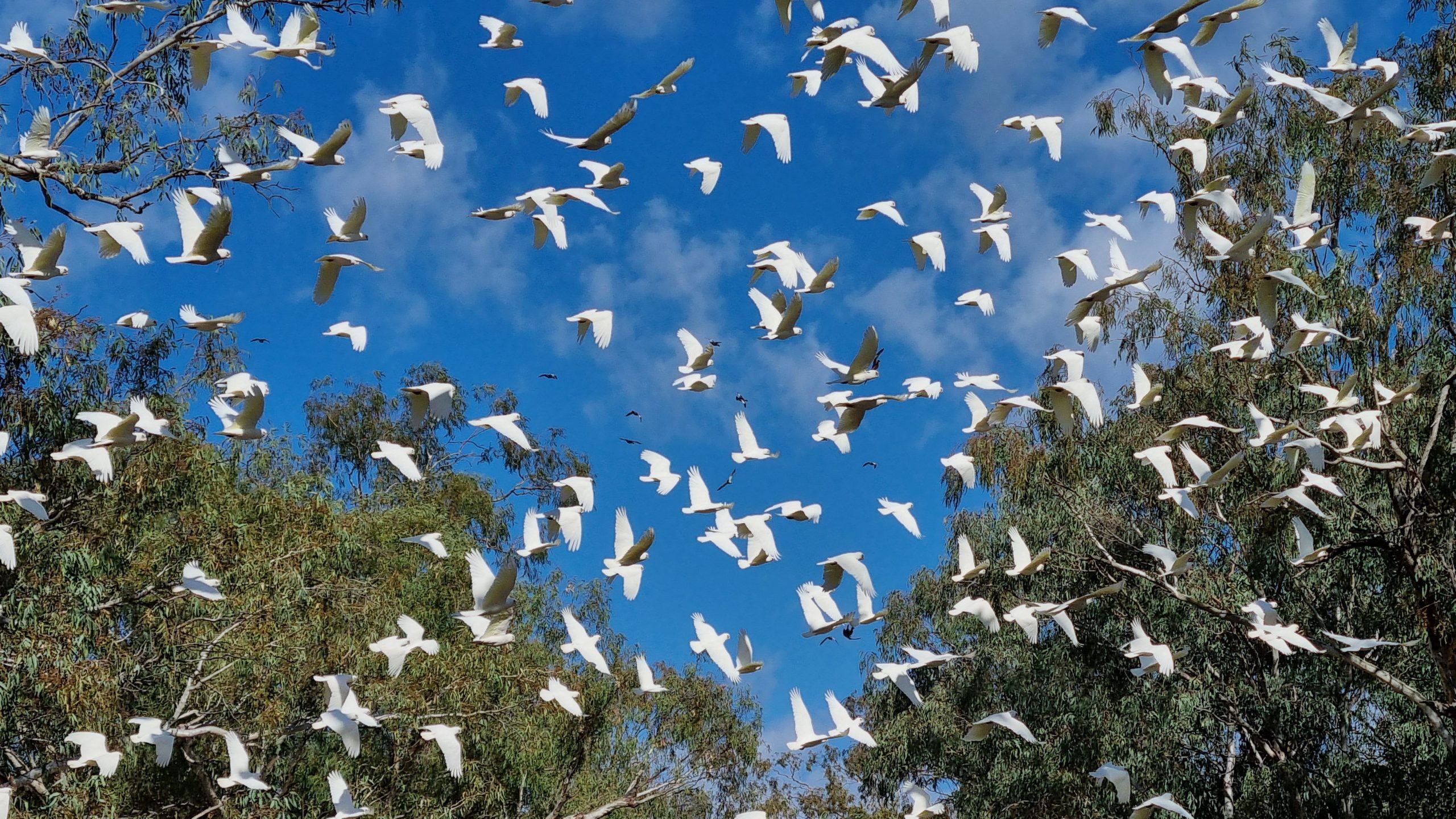
We had one rather weird experience in that we were paddling downstream as normal, then noticed the flow going in the opposite direction around trees—it took us a few moments to sink in that we were now paddling upstream! It turned out that we had inadvertently paddled into the rather wide Marthaguy Creek joining in and gone upstream without even noticing it. We all denied responsibility for navigation. We were more tuned-in when the next river (the Castlereagh) joined in.

Karen and Jim finished at our vehicles at Bush Road, approximately 11 kilometres upstream of the Barwon River junction (we hadn’t received permission in time to leave the vehicles on private property at the junction) and headed back to Sydney with things to do. Meanwhile on our paddle, permission had come through to access the junction, so Bron and Kevin did a car shuttle and paddled to the junction and onto the Barwon River.
The change at the junction was a unique transition of ecological regime, in that we went from weaving in and around red gums and coolabahs to being suddenly in the middle of a big wide open river. The trees were on the banks only—not in the river—and there were less of them, the understory vegetation was a bit lacking and there was only the odd bit or two of farm machinery on the banks. It made us truly appreciate the Lower Wambuul-Macquarie River and its ecological beauty.
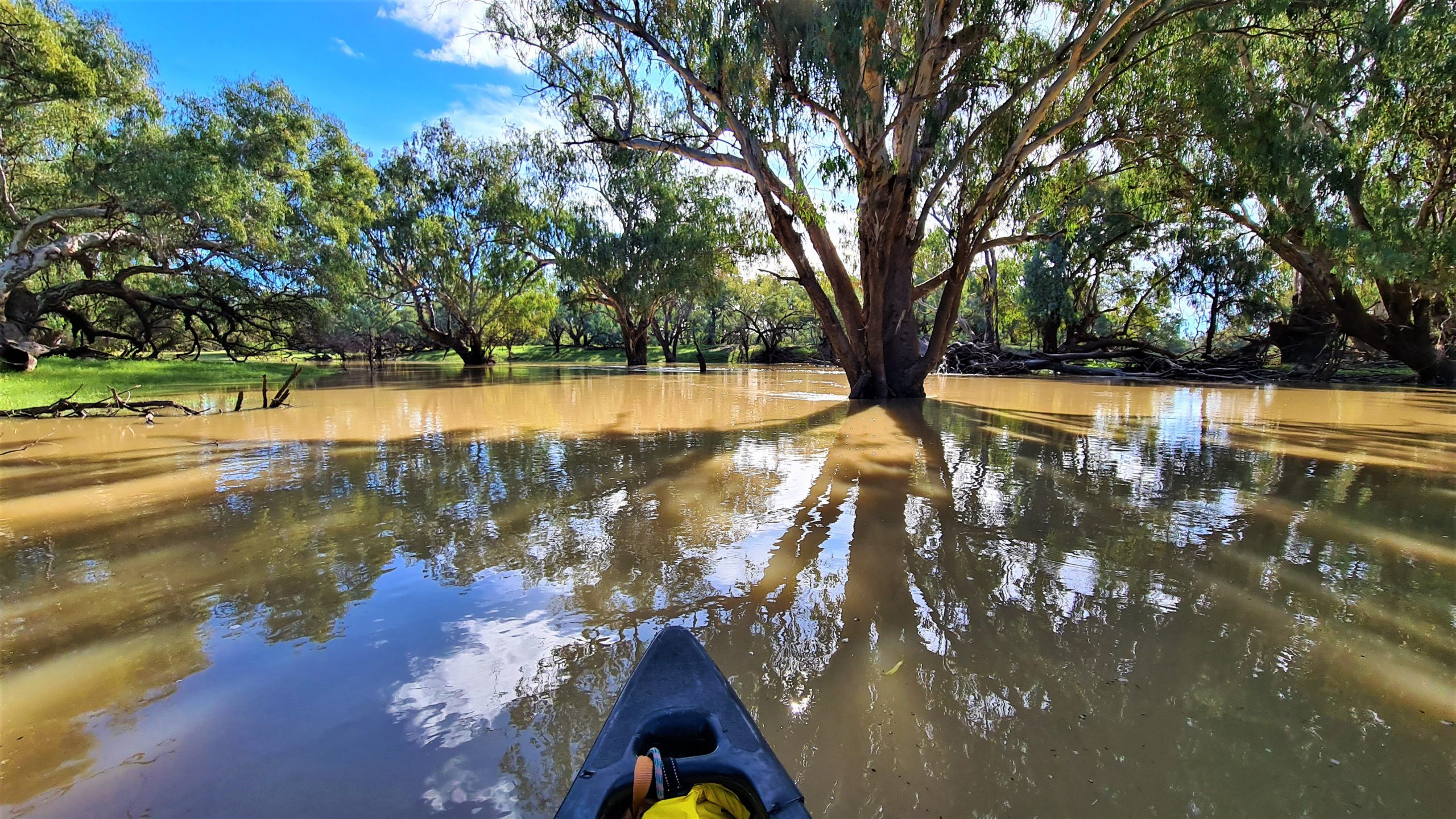
Kevin had been intent the whole trip on getting a photo of him standing in a cotton field. The first attempt resulted in sinking almost to his knees in blacksoil mud, and the second attempt, on our way to the junction, looked like the perfect opportunity as we had to drive right through the middle of a massive cotton field. All was going well, aiming the camera for the best selfie ever, when “Oh ####, run!”—we saw a crop duster plane at the other end of the cotton field, dumping a load of chemicals as we watched, so we bolted for our cars, put the windows up and shut the vents; we coordinated between us on our UHF radios to make a dash for it in between runs of the plane. Yep, we had to drive through the middle of the paddock as the plane was going back and forth overhead, Kevin protesting about no photo and damn crop dusters!
After the paddle to the junction we had to drive back through Carinda, and the pub accommodation was full (unheard of, and we’re not sure if it was true), but nevertheless we had to stay in the campground—the amusing green tree frogs all through the bathrooms made up for it though!

Bokhara River
The Bokhara River flows into the Barwon River from the north, beginning in southern Queensland. We had a two day trip planned, on a section between Goodooga and Brewarrina, but by lunchtime on the first day we were bored—lots of dead trees (the drought had knocked them off), almost no river redgums (all coolibah—not as pretty) and no sun; so grey trees, grey weather—just all-round grey really. At least the sun came out after a while, but its a bit sad when the best thing about the paddle was the interesting clouds in the sky. “Thank goodness this is only a two day trip… At least it’s different, paddling on a river that doesn’t normally flow…”, we tried to console ourselves.
It hadn’t helped that the night before we camped at some less than savoury shearer’s quarters on Bron’s friends’ property—we had been looking forward to staying a night there and were going to sleep in the shearer’s quarters, but the mosquitoes were so bad that each time you opened the door of a room to go in, a cloud of them would accompany you, so a tent on the verandah was the best option. (It also didn’t help that when Bron caught up with the landholder-friend later who was away at the time, he said we could have stayed in the nice cabin next to the house—d’oh!).

The landscape did, however, have the unique occasional feature of being able to look out from our canoe across a flat plain and see a vast distance to the horizon with occasional kangaroos hopping through the grasses—you only get that in places like this. The scenery picked up by the end of the first day, and got even better on the second day— the river became more like a wetland, with lignum channels to paddle through, and lots of Nankeen night herons. The sense of remoteness added to the beauty and we were thoroughly enjoying it. Many thanks to the landholders who let us access and/or camp on their property (90% of the access was through private properties).
Stay tuned for more trips exploring inland waterways!
